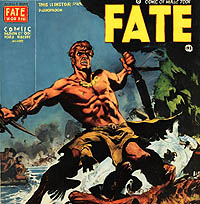Two or three times a year we give clinics at area karate schools. This poses a dilemma in that achieving any level of proficiency in any of the five stick counts I use for training takes at least a month of regular practice. What do we cover: an 8-count, a 12-count, a 13-count or God forbid a 20-count? Even if using a full FMA count were practical for such a brief introduction such a count is just the beginning of developing stick-fighting proficiency. And, even if proficient in some form of FMA or freestyle stick-boxing or stick-fencing how much of that transfers directly to making a self-defense student [not a combat athlete] more survivable?
Having experienced mixed results using counts in the past, which are intended as long-term training aids and attack references to begin with, I decided to look at the problem from a scenario-based perspective. To begin with I have noted that most good stick-fighters tend to stick with about five strokes. Sure, they can do many more than that. But, against tough opposition they tend to stick with their five best shots. So I decided to use this as a guide, and present only five tactics that have proven to have a high incidence of effective application for a variety of stick-fighters, one of these being a live-hand [empty-hand] technique.
The general rule for armed aggressors is that the smaller ones use edged weapons and firearms and the larger ones use blunt weapons. Larger attackers are also less likely to choose a weapon. The common instinctive ‘street-wisdom’ that has small men choosing knives and guns and large ones choosing blunt objects points to the practical nature of many decisions made by aggressors.
So, my scenario involves a small defender attempting to employ a stick in defense against a large unarmed aggressor. This poses a problem as it is generally easy to clinch with someone wielding a blunt extension weapon and new stick-fighting students tend to extend the weapon toward the opponent defensively as they retreat and/or step toward the opponent when they try to strike with authority.
Deconstructing the Options
1. We don’t want them using the stick to ‘defend’ but to strike
2. We don’t have time to teach advanced footwork so we will go with whatever evasive strong-side footwork the student’s art supplies, enabling the host teacher to engage in part of the instruction.
3. We do not want to teach any thrusts accept those that are used to avoid or break the clinch. So we will teach the Doce Pares, Modern Agonistics, Bais Tres Manos #5.
4. We do not want to teach any lateral or diagonal back-hands as even most experienced stick-fighters are not any good at these. However, a vertical backhand is desirable as it features a pulling motion which is compatible with evasive footwork so we will teach the Doce Pares, MA #12
5. We want our defender to pose a threat so we will teach the simplest forehand [the Dog Brothers ‘Caveman’, Modern Agonistics #13, Bais Tres Manos #1] and the most effective strike the Doce Pares, MA #1, Bais Tres Manos #3].
6. A commitment to staying out of the grapple means we have to teach the FMA live-hand ‘check’ or Agonistics stiff-arm.
The Arsenal
We presented the options from long range through close range.
1. [Doce Paras, MA #1, Bais Tres Manos #3] Lateral forehand to the hand or side of head
2. [Bais Tres Manos #1, MA #13, Dog Brothers ‘cave-man’] Diagonal forehand to available target vectoring from temple to hand to knee.
3. [Doce Pares, MA #12, modified Bais Tres Manos #13] A vertical backhand slash down through the head or hand.
4. [Doce Pares, MA, Bais Tres Manos #5] a pronated [knuckles up] stab to the torso or pelvic bone just under the oblique. This stab is done lightly on the toes as the checking hand is released and re-chambered and is intended as a ‘push-away’ or prying loose tactic. You are not attempting to do damage but maintain long distance. In FMA terms this is a Largo Mano maintenance drill.
The Guard
I really like the competition stick guard that has the right hand above the right hip and refused, with the stick held diagonally across the body with the tip at about the left eye and 6 to 12 inches away from the face. When you are armed with a stick your hand is always a priority target, even when your opponent is unarmed. Refuse it, do not present the hand. Not presenting the hand is the most difficult thing for stick-practitioners who do not compete, and will need to be stressed. The left shoulder should be refused and the stance oblique, not square or lineal.
Footwork Notes
For the lateral forehand I like an outside C-Step or reverse triangle.
For the diagonal forehand I like a reverse shift.
For the vertical backhand I like a double reverse shift, an inside triangle-step, or a draw-step into a cat-stance.
To make the stiff-arm and stab work you have to keep shifting with a diagonal drift away from the aggressor’s right hand. The left hand will also be needed to break grabs and slap down a reaching hand that gets past the stick.
Results
Having abandoned the traditional and very useful forehand to backhand rhythm in favor of three-to-one forehand strokes Charles and I were afraid that this would be hard to coach. It actually turned out to be surprisingly functional. I hoped it would be as these are the primary tactics I use to avoid the clinch in stick-fights. Never-the-less we were afraid that it would be un-trainable for novices.
Having tried this with a karate class we are looking forward to trying it again with more hands on work with the students. The most enlightening portion of the clinic was when the students paired up with a stick against an armed but helmeted and gloved stick-fighter who attempted to advance and clinch. By the end of one session we had 2 of 6 students successfully defending, which is at least a starting point. This is incidentally the same rate of success we have going stick-against knife. The main problem is teaching people how to hit hard with a stick without getting into the clinch. The stiff-arm and stab-push-off was easier to train.
Conclusion
Using a relatively [forensically speaking] ineffective weapon like a stick [which the ancients would have called a wand] against a larger aggressor possess a significant problem. The upside is that the stick is more easily justified and generalized [for a cane or umbrella for instance] weapon of defense than others. It is worth working and presents a functional bridge from empty-hand to blade.
Please, never forget the legalities of an armed defense. You may only arm yourself when there is a disparity of force in the aggressor’s favor.











